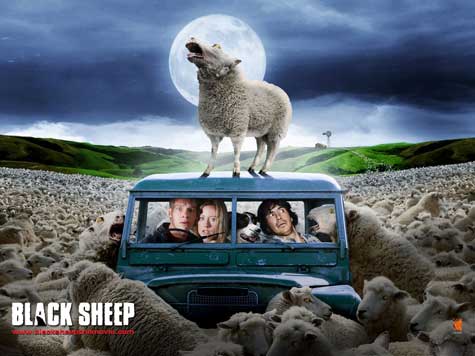

was sort of the brief we’d hand to designers, that everything about her is ‘Shaun-plus.’ So, she’s just as cheeky, she’s got as much love for fun and everything like that, but at the heart of both of them, there’s this warmth and friendliness. So, we spent a long time designing Lu-La, and making her feel like someone that, when Shaun met her, he’d immediately be drawn to her, and want to hang out with her. Then, just the idea of creating a character that could fit into this iconic lineup. A lot of the early testing was, how could we build sets, without having to knock down walls at the studio. PHELAN: For this film, we decided to shoot in a much wider aspect ratio because we wanted to create this vast-expanse feel to the story. Everyone finds humor in the fact that this is a little sheep that lives on a farm in England, but really, is like a little boy who wants to have adventures, and have fun with his mates.ĭEADLINE: What were some of the earliest creative decisions you made, in expanding Shaun’s world? Really, that’s part of his appeal, the fact that he translates across the world, to all these different cultures. He looks very simple, but actually, he’s a very classic, iconic design, so straight away, just with the outline of his face and his hair, you know who it is. He’s become one of Aardman’s favorite characters to work with, and I think it’s also the fact that he’s a silent film star. He did make this huge impact, even though he had a fairly small part in A Close Shave, and at Aardman, he’s just developed over the years, with his series.

WILL BECHER: Rich and I had both worked at Aardman for 10 years or so at that point, and it was just a really exciting prospect for us to take on the mantle that had been set up by Nick Park, and then developed further by Richard Starzak.ĭEADLINE: Why do you think Shaun the Sheep continues to resonate as a character, 25 years after his creation? What do you personally love about him?īECHER: I think everyone at Aardman realized very soon after A Close Shave, way back, that Shaun was something special. So, we were just super excited to take Shaun on such a big idea, to really expand everything, open up the aspect ratio and make the farm bigger. He said, “You could call it Farmageddon,” so everyone laughed and just wrote it down-and then about 12 months later, after a lot of wrangling in the story department, the script was ready to roll. Then, it was the same meeting that Nick Park was there, and his eyes lit up. Isolated farmsteads are part of sci-fi lore, so it’d be really fun to have Shaun the Sheep meet an alien, and go on a big adventure with it. We noticed that the first film was a very low-concept family adventure, and then we talked about really high-concept ideas, and realized that Aardman had never made a sci-fi film before.

RICHARD PHELAN: As the first film was wrapping up, we all got together to discuss ideas for a sequel. 'A Shaun The Sheep Movie: Farmageddon' Review: The Flock Is Back And Fun As Ever In Alien Adventure Netflixīelow, Farmageddon‘s directors break down the process of crafting a “high concept” sequel chockablock with sci-fi homages, also touching on the enduring resonance of Shaun the Sheep, and the projects Aardman is taking on next.ĭEADLINE: How did Farmageddon come about? And what excited you about directing it?

#Sheep impact full movie tv#
With characters carefully crafted by hand in clay and plasticine-and 3D printing employed in the fabrication of more solid parts-the latest Shaun film comprised “an almost insane level of detail,” Phelan says. And while both Becher and Phelan had taken on above-the-line roles in the past on Aardman’s Shaun the Sheep TV series, transitioning to feature directing would be a major challenge.


 0 kommentar(er)
0 kommentar(er)
